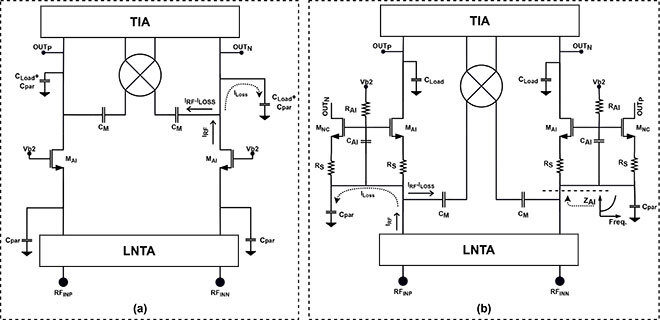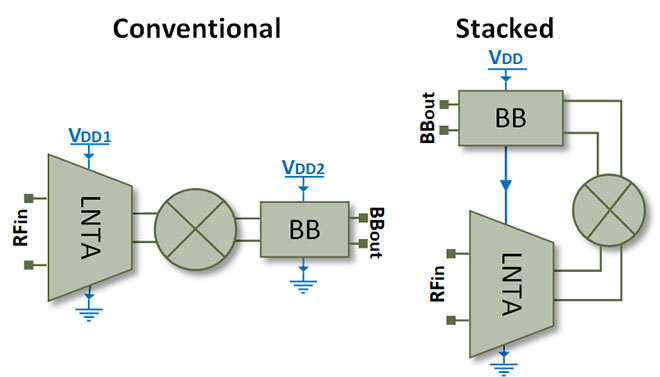Reducing the Power Consumption of IOT Devices

Purchased on Istockphoto.com. Copyright.
This work presents a radio frequency-to-baseband (RF-to-BB) current-reuse receiver (CRR) front-end technique to reduce power consumption by sharing current among a low-noise transconductance amplifier (LNTA) and a transimpedance amplifier (TIA). Several conference and journal papers by the authors have been published on this research work. Studies include: improving the input matching network and output filtering technique; improving the current-reuse architecture with an active-inductor to achieve higher bandwidths; a novel clock-strategy technique in a current-reuse architecture aimed at both low dynamic and static power consumption; a tutorial article that provides the design methodology and perspective of RF-to-BB current-reuse front-end; and a paper reporting measurement results using a low-noise cancellation technique and an on-chip inductor [1].
Small Reduction ‒ Big Impact
The rapidly growing Internet of Things (IoT) is improving our quality of life by creating a smart environment where objects offer several wireless functions. This includes location tracking and positioning used in postal services, soldier tracking to minimize casualties, anti-theft tracking systems in cars, home automation, continuous tracking of patients by experts, remote control watering systems in agriculture, etc. It is estimated that the number of IoT devices will increase so much by 2030 that lowering the power consumption of each IoT device by a fraction could lead to a significant overall energy reduction and have a notable environmental impact through energy savings, but also by avoiding landfilling thanks to less battery use.
Improving Radio Frequency Transceiver Efficiency
An IoT module includes a wireless RF transceiver and baseband circuitry to analyze and monitor data. In an IoT module, the RF transceiver plays a significant role in defining the overall power consumption. This work focuses on reducing the power consumption of RF transceivers. There are several techniques to consider, such as mixer-first and current-reuse. The mixer-first architecture can reach very low power consumption but limit bandwidth; it is not suitable for wideband operation needed for the IoT, which features highly heterogeneous wireless protocols and frequency bands. However, the current-reuse architecture can achieve a wide bandwidth with slightly higher power consumption, depending on the IC fabrication process. The proposed RF current-reuse receiver (CRR) is achieved by stacking a transimpedance amplifier (TIA) and a low-noise transconductance amplifier (LNTA) to share the current consumption from a single supply, as shown in Figure 1.
Proposed Circuit Design Techniques
There are several publications on CRRs but they have different drawbacks, such as narrow-band input matching, high-low-frequency noise, loading effect on the RF signal due to the parasitic capacitors, and using an active-mixer that limits linearity. This research proposes design techniques and methodologies to overcome such problems. Figure 2 shows a block diagram of (a) a convectional CRR with cascode transistors that shares the passive mixer input and output node, which is highly capacitive and does not allow the circuit to operate at high RF; (b) the proposed receiver architecture introducing an active-inductor and 1/f noise cancellation technique. In the proposed architecture, the cascode transistor is converted into an active-inductor and 1/f noise-cancellation circuitry to isolate the mixer input from the output node and reduce low-frequency noise. This way, RF signal loss is significantly reduced. Moreover, thanks to the 1/f noise cancellation circuit, low-frequency noise is reduced allowing the receiver to operate at a lower intermediate frequency and provide lower power consumption.

Figure 2. (a) Convectional CRR with cascode transistor. (b) Proposed architecture introducing an active-inductor and 1/f noise cancellation technique.
Additional Information
[1] A. Abbasi, A.H. Moshrefi and F. Nabki, “A Wideband Low-Power RF-to-BB Current-Reuse Receiver using an Active Inductor and 1/f Noise-Cancellation for L-Band Applications,” IEEE Access, 2022.



